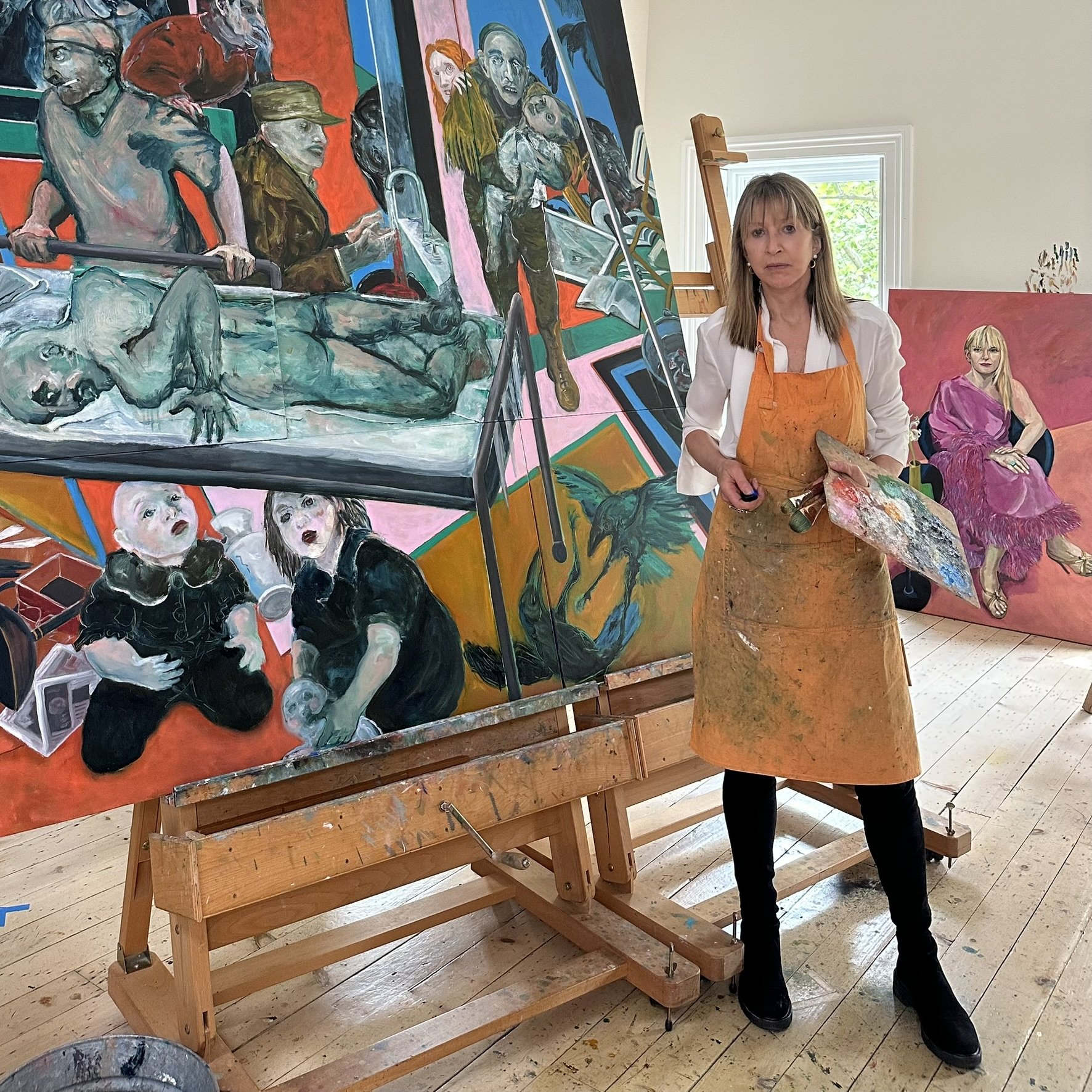Sandra Cavanagh: From Buenos Aires to New York—An Artistic Evolution
Sandra Cavanagh’s career began in 1997, after completing a Foundation in Fine Arts and a BA degree from the Kent Institute of Art and Design, University of Kent, UK. Born in Buenos Aires, Argentina, Cavanagh’s first two decades were pitched on the tensions between a loving family life and constant political upheavals, unrestrained military governments and the ominous danger of politically sanctioned brutality and censorship. She read Social Sciences at the University of Belgrano, Buenos Aires before emigrating to California and later to the UK where she completed studies in Fine Art. She returned to full residency in the United States in 2010 and has worked and resided in New York City ever since.
How has your upbringing or cultural background influenced your work?
I grew up in Argentina, within a deeply patriarchal and conservative culture, where democracy was imperilled by coups d’état, terrorism and military rule. I witnessed the uncertainties of life in a police state where unchecked uniformed authority inevitably causes a break of trust in the institutions of government. Early on I cultivated an interest in a courageous opinionated art, and to date social injustice, violence, and gender inequality continue to drive the narratives developed in my work.
What themes or ideas do you explore in your work?
I have a long held interest in the trajectory of narrative painting. Recently I’ve turned to iterations of age-old mythology to comment on current socio-political tensions, ancient and contemporary power struggles and the pressures they generate for those of us living, observing and suffering such dynamics. I’m drawn to these intergenerational stories as they continue to find form in popular media, the face of entertainment for sure, but always to the service of human psychological experience. I’m interested in other artists and in their self portraiture. I’ve incorporated portraiture and self portraiture into my own practice. More broadly, I take my cue from my surroundings in still life painting in a way to pay homage to my materials, in landscape painting and in watercolor work in reverence to the beauty of the natural world and to color.
Are there any artists past or present who have had a significant impact on your work?
Titian, Gentileschi, Rembrandt and so many others.
What has been the most challenging aspect of your artistic journey so far?
Achieving public visibility has been the hardest challenge, which I believe is echoed by all artists with an already clear, artistic and creative maturity. As to growth, the excitement always lies in innovative figuration.
Are there any upcoming projects or exhibitions you’re excited about?
Group Shows
• March 20 - 23, 2025: 2025 14C Gallery @ Scottsdale Ferrari Art Week – Scottsdale, AZ
• March 6 - April 20, 2025 (New York) & July 17 - August 24, 2025 (Italy): 2025 Art Exchange: America x Italy – Museo Limen, Vibo Valentia, Italy
• May 8 - 11, 2025: Art Fair 14C: 6th Edition – Jersey City, NY
Solo Show
• TBD: War and Myth – Annex Gallery, Indiana University of Pennsylvania, Indiana, PA
How do you see the role of art in society today?
I see art as a mirror to its time and community. Strictly, when political it’s engaging with a community’s viewpoint, if abstract it’s about an aesthetic viewpoint, if biographical it’s about a psychological viewpoint. However these functions merge, the success of a message or theme, whether personal or socio-political depends on the form of its delivery. At its most successful, a piece of work is underpinned by the elements of all three, and considering the universality of human sensibilities, it is also able to find resonance in a diverse audience. In all candor I say that I aspire to that universality.
If you could collaborate with any artist dead or alive who would it be and why?
Right now, I’d say Artemisia Gentileschi, for her brilliance and the toughness of her pictorial composition
Sandra Cavanagh says, “I sustain a mostly figurative focus in reaction to current and historical narratives, including my own. Recent global events have led me to reflect on mortality and the loss of innocence in transgenerational stories, as well as the enduring role of myth, foundational stereotypes, and the everyday presence of violence in art.
Maintaining a consistent practice, I have built a large portfolio of paintings, drawings, and prints, often taking intervals to explore still life and portraiture. Interested in the relationship between form and message, I frequently work in series, creating pictorial storylines with urgency—seeking to exhaust a subject until I either understand it or free myself from it. The result is an annotation of emotions and perspectives, underscoring a dramatic approach to both form and message.”




